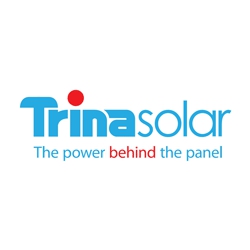A company like Trina Solar can be a little difficult to get to know.
It’s probably more likely, however, that we don’t know much about this company because, unlike Sanyo and Samsung and many other solar manufacturers, Trina Solar had never previously established itself as a brand name in electronics before producing solar panels.
What? A solar power company that doesn’t produce cell phones or clock radios? That’s right people, and they’ve been doing it since 1997.
Now that we’ve had some time to get over that shocker, let’s take a look at what makes Trina Solar different.
It says on the Trina website that the company produces mono and multicrystalline solar panels. If you’re not clear on the difference between the two, here’s a brief explanation:
Monocrystalline panels use solar cells that are usually a little more efficient and a little more expensive due to the process used to create them (they are cut from cylindrical ingots).
Multicrystalline panels use slightly less efficient and less expensive solar cells that are created from a block of molten silicon that has cooled and solidified.

According to the official story, Trina Solar is also “vertically integrated”. You may have heard this term quite a bit lately and what it usually means is that a company controls many stages of its product supply chain.
In Trina’s case this means that they produce their own “ingots, wafers, cells and modules in-house”. This differs from other solar companies that buy solar cells from a supplier for use in their solar panels.
For more information on Trina’s manufacturing process, check out the highly informative YouTube video here:
Why should vertical integration matter to a potential Trina customer? Well, the idea is that when a company controls multiple stages of its product’s creation, it can improve efficiencies and keep costs low. This should mean a lower price for Trina panels. In other words: You should be able to save some dough.
Also, by keeping each element of production within the company, Trina is better able to control the quality of their finished product. This should mean a better module with less defects.
This control over quality allows Trina to stand behind their products. They put their money where their mouth is with a twenty five year warranty on their solar panels.
This includes five year “materials and workmanship” coverage as well as a guarantee of 90% power output for the first ten years and 80% for the next fifteen years.
Buyer Beware: While on the Trina website a pop up window warned me about companies selling Trina panels “at an unreasonably low level of prices”. It turns out there are some non-genuine Trina modules out there so keep that in mind while you do your solar shopping.
So how is Trina’s commitment to low costs, quality control, and a strong warranty working out for them? Well, in 2006 Trina had 28MW of production output and by 2009 they had grown to 600MW in production capacity.
Also, as of December 2009 (the latest stat on the company website) Trina had almost 8000 full-time employees. So things seem to be working out pretty well indeed.
Aren’t you glad you took a little time to get to know Trina Solar?
